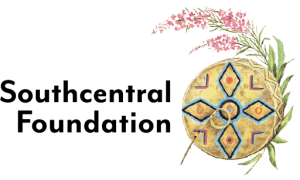Alaska’s Cleft Lip and Palate Program
If experiencing COVID-19 symptoms, please call to reschedule your visit.
If experiencing an urgent or emergent problem, regardless of symptoms, please call to discuss treatment options.
Alaska’s Cleft Lip and Palate Program (formerly known as the State of Alaska Cleft Lip and Palate Clinic) is the first state endorsed cleft lip and palate program in Alaska. This program holds nine clinics per year allowing parents and their children the most comprehensive evaluations possible through team care. Our team includes an audiologist, ear, nose and throat specialist, speech language pathologist, behavioral health consultant, nutritionist, pediatrician, pediatric dentist, oral surgeon, plastic surgeon, orthodontist, along with a parent navigator to help guide the families.
Alaska’s Cleft Lip and Palate Program is open to all Alaska residents, both Alaska Native and non-Native people.
Understanding Cleft Lip and Cleft Palate
What is cleft lip and palate?
When part of the the lip or roof of the mouth (palate) does not form properly, it leaves a gap, or cleft. This happens early in pregnancy and may be detected before birth. Children can have one or both of these conditions.
Cleft Lip
Cleft lip is when the upper lip is not completely formed. This affects how the lip works.
- If the cleft only affects the lip, it is called a partial or incomplete cleft.
- If the cleft affects the base of the nose, it is called a complete cleft.
- When the cleft is on one side, it is called a unilateral cleft.
- When there is a cleft on both sides, it is called a bilateral cleft.
- If the gumline is affected by the cleft, tooth development is also affected.
Cleft Palate
When a baby is born with a gap in the roof of their mouth (palate), it is called a cleft palate. The gap found in a cleft palate allows liquid and food to pass between the nose and mouth, which can interfere with eating and sucking on a bottle. Clefting of the muscles at the back of the palate (the soft palate) affects speech. The palate is repaired not only to keep food and liquid in the mouth when eating, but also to allow for more normal speech as the child grows older.
In a submucous cleft palate, the gap in the roof of the mouth is covered by a thin layer of soft tissue (mucousa membrane). This makes the cleft hard to see when looking in the mouth, but it can affect speech in the same way as a cleft palate. A split uvula is often seen in children with submucous cleft palate.
How common is cleft lip and palate?
Cleft lip and palate are among the most common types of birth defects in the United States. Some clefts are more common than others.
- 1 in every 1,500 newborns have a cleft lip.
- 1 in every 2,000 newborns have an isolated cleft palate (only the palate is cleft).
Alaska Native and American Indian families have a significantly higher risk of this birth defect:
- 3.6 in every 1,000 newborns have a cleft lip or palate.
What causes cleft lip or palate?
60 percent of cleft lips and palates are not linked to anything that happens during or after pregnancy.
There are a few exceptions, including:
- Exposure to phenytoin (Dilantin) during pregnancy makes cleft lip 10 times more likely to occur.
- Smoking while pregnant makes cleft lip two times more likely to occur.
- Using alcohol, anti-seizure medication, or vitamin A (retinoic acid) are linked to cleft lip and palate, along with other birth defects.
Symptoms of Cleft Lip and Cleft Palate
Cleft Lip
Cleft lips can vary from person to person. A cleft lip could be a small notch in the red part of the upper lip or it could be two wide gaps in the upper lip with a stretched nose.
In a cleft lip:
- The muscle, skin, and lining of the lip are missing where there is a gap (cleft).
- The tissue is misplaced on each side of the cleft, which distorts the nearby areas of the face.
- The nose or one nostril can be stretched and malformed. This can cause nasal obstruction, which will need to be corrected later in life.
Cleft Palate
A cleft palate can only be seen when the baby’s mouth is open, as the cleft (gap) is in the roof of the mouth.
If there is only a cleft palate and not a cleft lip, it may not be noticeable at first, if it only affects the soft palate.
Contact Us
Alaska’s Cleft Lip and Palate Program
4441 Diplomacy Drive
Anchorage. AK 99508
Phone
Fax
206-238-9262
